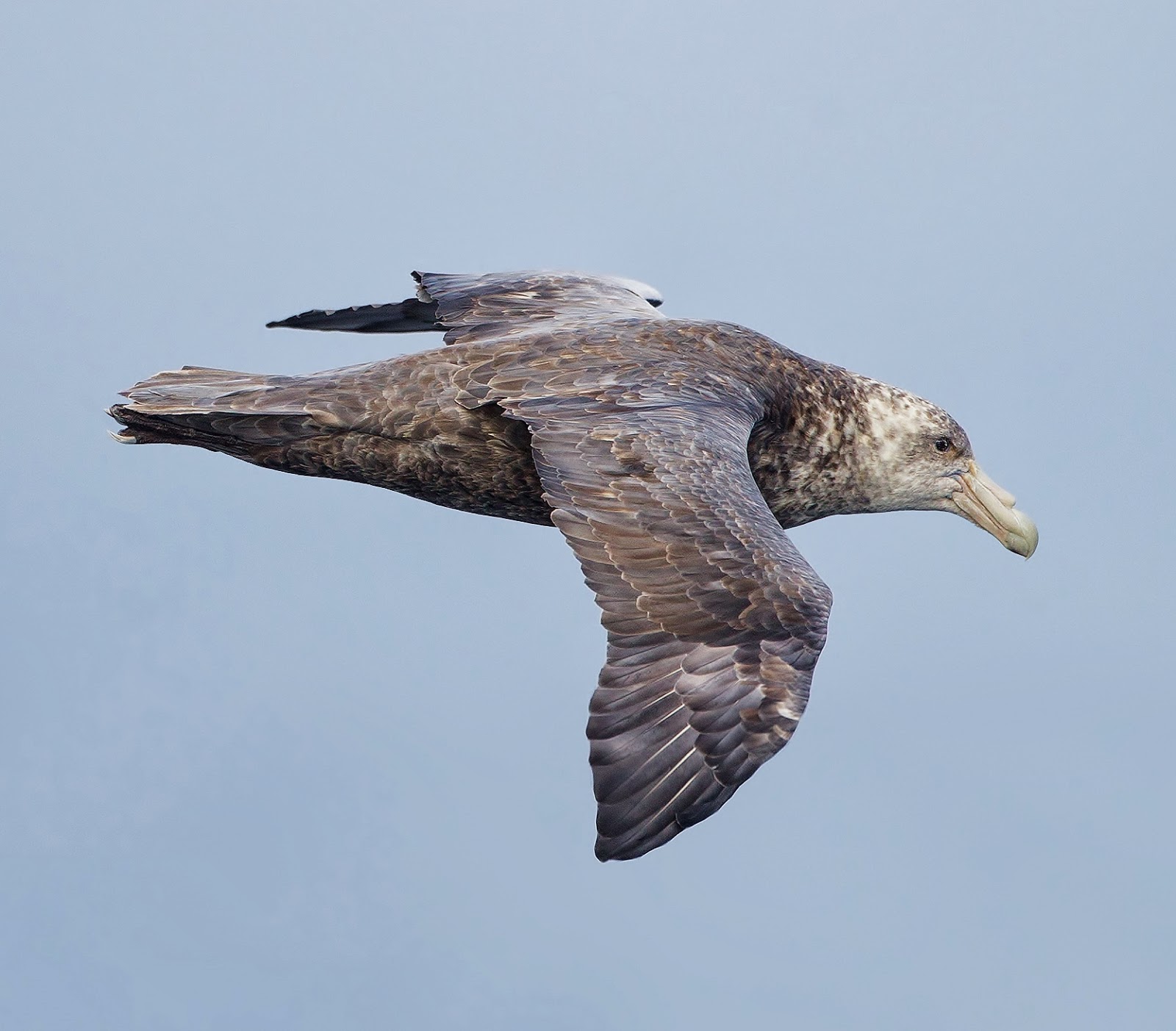 |
| Photo by J.J. Harrison (Wikipedia) |
Common name:
southern giant-petrel (en); petrel-gigante-do-sul (pt); pétrel géant (fr); abanto-marino antártico (es); riesensturmvogel (de)
Taxonomy:
Order Procellariiformes
Family Procellariidae
Range:
This species is found in the southern oceans, from Antarctica north to southern Australia, southern Africa and southern South America. They breed in sub-Antarctic islands and along the coasts of Antarctica, namely on the Falkland Islands, Staten Island and islands off the Chubut Province of Argentina, South Georgia, the South Orkney and South Shetland Islands, islands near the Antarctic Continent and Peninsula, Prince Edward Islands, Crozet Islands, Heard Island and Macquarie Island, Gough Island, Tristan da Cunha, Diego Ramirez and Isla Noir, Kerguelen Islands, and four localities on the Antarctic Continent including Terre Adélie.
Size:
These birds are the largest petrels in the World, at 84-99 cm long and with a wingspan of 180-205 cm. Males tend to be larger, weighing 4,2-4,9 kg while the females weigh 3,4-3,8 kg.
Habitat:
The southern giant-petrel are pelagic birds, foraging in the open sea as well as in coastal waters, but also use sandy and rocky intertidal areas. They breed in sub-Antarctic grasslands, sea cliffs bare rocky areas, manly in oceanic islands.
Diet:
They feed mainly on seal and penguin carcasses, also taking offal, refuse from ships and discarded fish. They also hunt krill, amphipod crustaceans and squids, as well as penguins and other seabirds.
Breeding:
These birds breed in October-March. They form loose colonies of up to 300 pairs, with each nest consisting of a cup on the ground, made of grass, moss and gravel. There the female lays a single white eggs, which is incubated by both parents for 55-66 days. The chicks are fed by both parents and fledge 104-132 after hatching. The juveniles spend their first years at sea, on an extensive migration in which they often circumnavigate the Southern Ocean. They reach sexual maturity at 6-10 years of age.
Conservation:
IUCN status – LC (Least Concern)
This species has an extremely large breeding range and a global population estimated at 65.000-100.000 individuals. The population has undergone a small decline over the last 6 decades. At present, different populations have different trends, but overall the southern giant-petrel population is believed to be increasing. Longline fisheries cause significant mortality on this species, but improved mitigation in many longline fisheries appears to have reduced bycatch levels. Localised decreases have also been attributed to reductions in southern elephant seal Mirounga leonina, which forms an important source of carrion, human disturbance and persecution.







